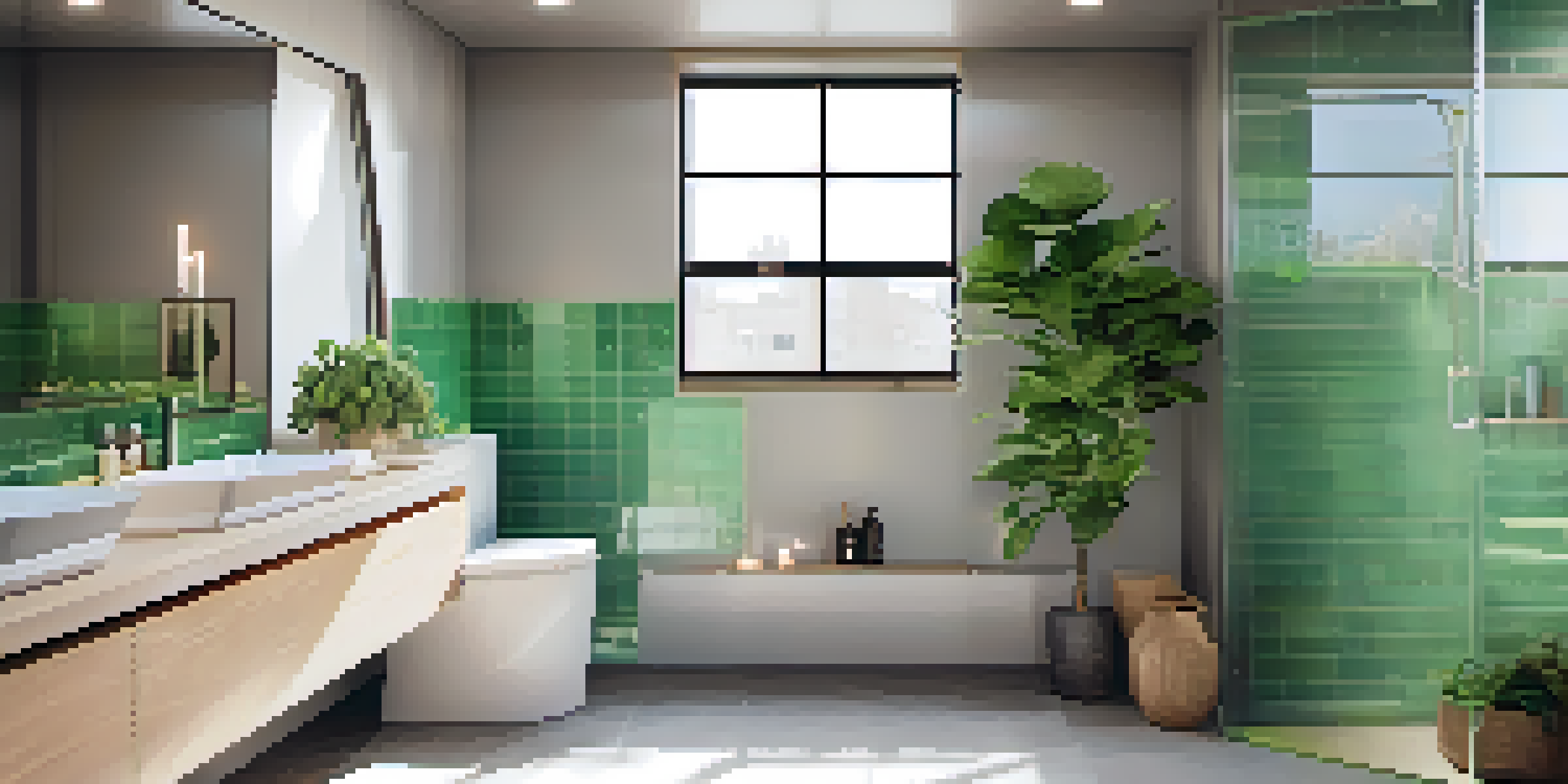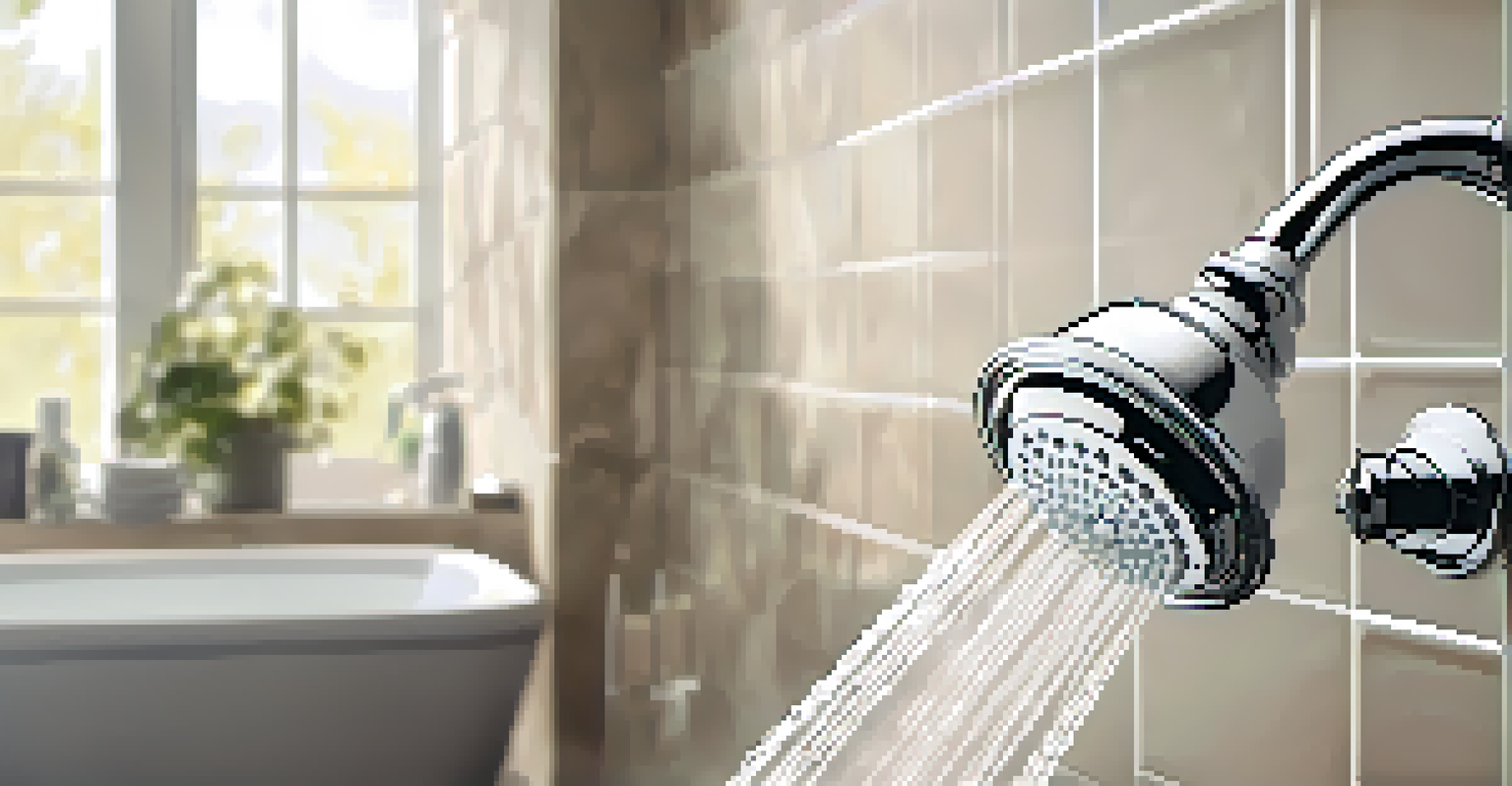Water-Saving Fixtures: Reduce Water Bills and Energy Use

Understanding Water-Saving Fixtures and Their Benefits
Water-saving fixtures are designed to minimize water usage without sacrificing performance. This includes items like low-flow toilets, showerheads, and faucets. By incorporating these fixtures into your home, you can significantly reduce your water consumption.
Water is the driving force of all nature.
Not only do these fixtures help the environment by conserving a precious resource, but they also lead to notable savings on your water bills. For example, a low-flow showerhead can save gallons of water each time you shower, which adds up over time.
Additionally, using less water often means using less energy, especially in homes where hot water is heated for showers and washing. By reducing your water usage, you also lower the energy needed for heating water, leading to even more savings.
Types of Water-Saving Fixtures to Consider
There are several types of water-saving fixtures available, each designed for specific uses. Low-flow toilets, for instance, use about 1.6 gallons per flush compared to older models that use 3.5 to 7 gallons. This simple switch can lead to substantial savings in water bills.

Showerheads are another key area where you can save water. Many modern low-flow showerheads use 2.5 gallons per minute or less, which can make a big difference if you take long showers. You can also consider faucet aerators, which mix air with water to reduce flow without impacting pressure.
Save Water and Cut Costs
Using water-saving fixtures can significantly reduce your water bills while conserving a precious resource.
Lastly, you might want to explore rainwater harvesting systems or gray water systems. These fixtures collect and reuse water from your home for irrigation or flushing toilets, providing an eco-friendly alternative to conventional water usage.
How Water-Saving Fixtures Impact Your Water Bills
The financial benefits of water-saving fixtures are hard to ignore. By reducing your water usage, you lower your monthly water bill, which is especially important in areas where water costs are rising. A typical household can save hundreds of dollars annually by making these adjustments.
The environment is where we all meet; where we all have a mutual interest; it is the one thing all of us share.
For instance, if you install a low-flow toilet that uses 1.6 gallons per flush instead of 3.5 gallons, you can save around 20,000 gallons of water each year. This translates to significant savings on your water bill, allowing you to allocate those funds elsewhere.
Furthermore, utilities often provide rebates for those who install water-efficient fixtures, adding an incentive to make the switch. Checking with your local water authority can reveal potential savings just waiting for you.
The Environmental Impact of Reduced Water Usage
Conserving water through fixtures isn’t just about saving money; it’s also about protecting our planet. Freshwater resources are becoming increasingly scarce, and every drop counts. By using water-saving fixtures, you're contributing to the conservation of this vital resource.
Additionally, reducing water consumption lessens the strain on local water treatment facilities and ecosystems. This means healthier rivers and lakes and less energy used in the treatment process, further benefiting the environment.
Environmental Benefits Abound
Adopting water-efficient fixtures helps protect freshwater resources and reduces your carbon footprint.
Moreover, by lowering your energy consumption from water heating, you also reduce your carbon footprint. Every action counts, and switching to water-saving fixtures is a simple yet impactful choice.
Choosing the Right Water-Saving Fixtures for Your Home
When selecting water-saving fixtures, it’s essential to consider both functionality and compatibility with your existing plumbing. Start by checking for the WaterSense label, which indicates a fixture meets specific efficiency criteria. This label helps guide your choices and ensures you’re investing in quality products.
It’s also wise to evaluate your household’s specific needs. For example, if you have a larger family, you may want to prioritize low-flow toilets and showerheads. On the other hand, if you’re in an eco-conscious household, consider installing rainwater collection systems for outdoor use.
Finally, don’t hesitate to seek advice from professionals. A plumber or home improvement specialist can provide insights tailored to your home, ensuring that you choose the best fixtures for your needs and budget.
Installation Tips for Water-Saving Fixtures
Installing water-saving fixtures can be a straightforward process, but you should always start by reading the manufacturer’s instructions. Many fixtures, like showerheads and faucet aerators, can be easily installed with basic tools. If you’re comfortable with DIY projects, you might find it a rewarding experience.
However, for more complex installations, such as low-flow toilets, it may be wise to consult a professional plumber. They can ensure the installation is done correctly and efficiently, thus maximizing the fixture's benefits.
Long-Term Investment in Efficiency
Investing in water-saving fixtures not only lowers utility bills but also increases your home's market value.
Additionally, once installed, remember to regularly check for leaks or clogs. Maintaining your water-saving fixtures will keep them functioning optimally and ensure that you continue to enjoy lower bills and energy savings.
Long-Term Benefits of Adopting Water-Saving Fixtures
Adopting water-saving fixtures is not just a short-term financial decision; it’s a long-term investment in both your home and the environment. Over time, the cumulative savings on your water and energy bills can be substantial, allowing you to enjoy those benefits for years to come.
Furthermore, as more homeowners embrace sustainability, the value of homes with water-efficient fixtures tends to rise. Potential buyers are increasingly looking for energy and water efficiency as key features, making your home more attractive on the market.

Ultimately, by embracing water-saving fixtures, you’re not only cutting costs but also setting an example for your community. Small changes can lead to significant impacts, inspiring others to join in on the journey towards a more sustainable future.